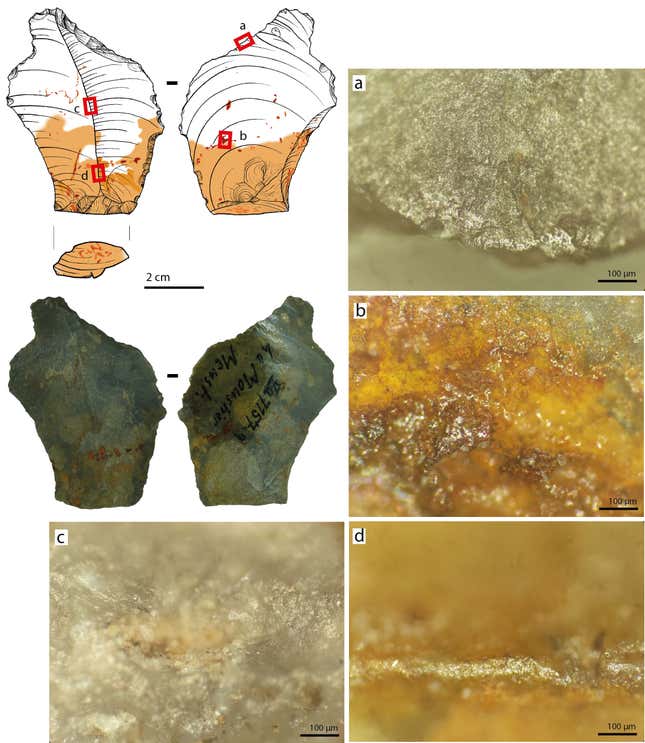A group of Neanderthal tools dating back between 120,000 and 40,000 years ago were forged using glue, according to a team of researchers who recently studied the objects.
The research revealed the oldest evidence of a complex adhesive in Europe Release from NYU. The adhesive — composed of bitumen, a component of asphalt that occurs naturally in soil, and ocher — was found in trace amounts on stone tools from Le Moustier, a Neanderthal site in France. And the results were published This week in Science Advances.
“When used as a hand grip on cutting or scraping tools, a behavior known to Neanderthals, high-ochre adhesives provide a real benefit, improving their hardness and toughness,” the researchers wrote in the paper.

Bitumen is an adhesive in itself, but as a liquid it cannot be a good glue. But when combined with ocher – the same material Used by Neanderthals and early modern humans To create works of art on cave walls – they create a hard, sculptable material, which Neanderthals applied to scrapers, flakes and blades at Le Moustier. The team studied five stone tools with ocher marks: three flakes, a retouched blade, and a side scraper.
“Composite adhesives are among the first expressions of modern cognitive processes that are still active today,” Patrick Schmidt, an archaeologist at the University of Tübingen and lead author of the study, said in the same release. Neanderthals were intelligent and innovative, it turns out Artworks And a group of tools.
The lumpy mass of bitumen and ocher adhered to the stone, but did not adhere to the hands, making it an ideal material for making the tool handle. Microscopic imaging of the tools revealed two types of wear: one indicating that other materials had been manufactured and the other indicating that the adhesive itself had been worn through use. The team therefore believes that the adhesives were used as handles themselves, rather than attaching stone tools to the handles.
Le Moustier's finds were found in 1907 but have remained in storage since the 1960s. “As a result, the remains of adhered organic materials were extremely well preserved,” study co-author Ewa Dutkiewicz, a researcher at the University of Tübingen and the Museum of Prehistory and Early History in Berlin, said in the statement.
our Modern understanding of Neanderthals It is a far cry from old, outdated ideas about our closest relative Homo Relatives. Although they became extinct about 40 thousand years ago, Neanderthal DNA still remains In most people today, an indicator of how Neanderthals were gradually classified inside Homo sapiens.
more: Remains of a Neanderthal family found in a Siberian cave

“Beer aficionado. Gamer. Alcohol fanatic. Evil food trailblazer. Avid bacon maven.”
